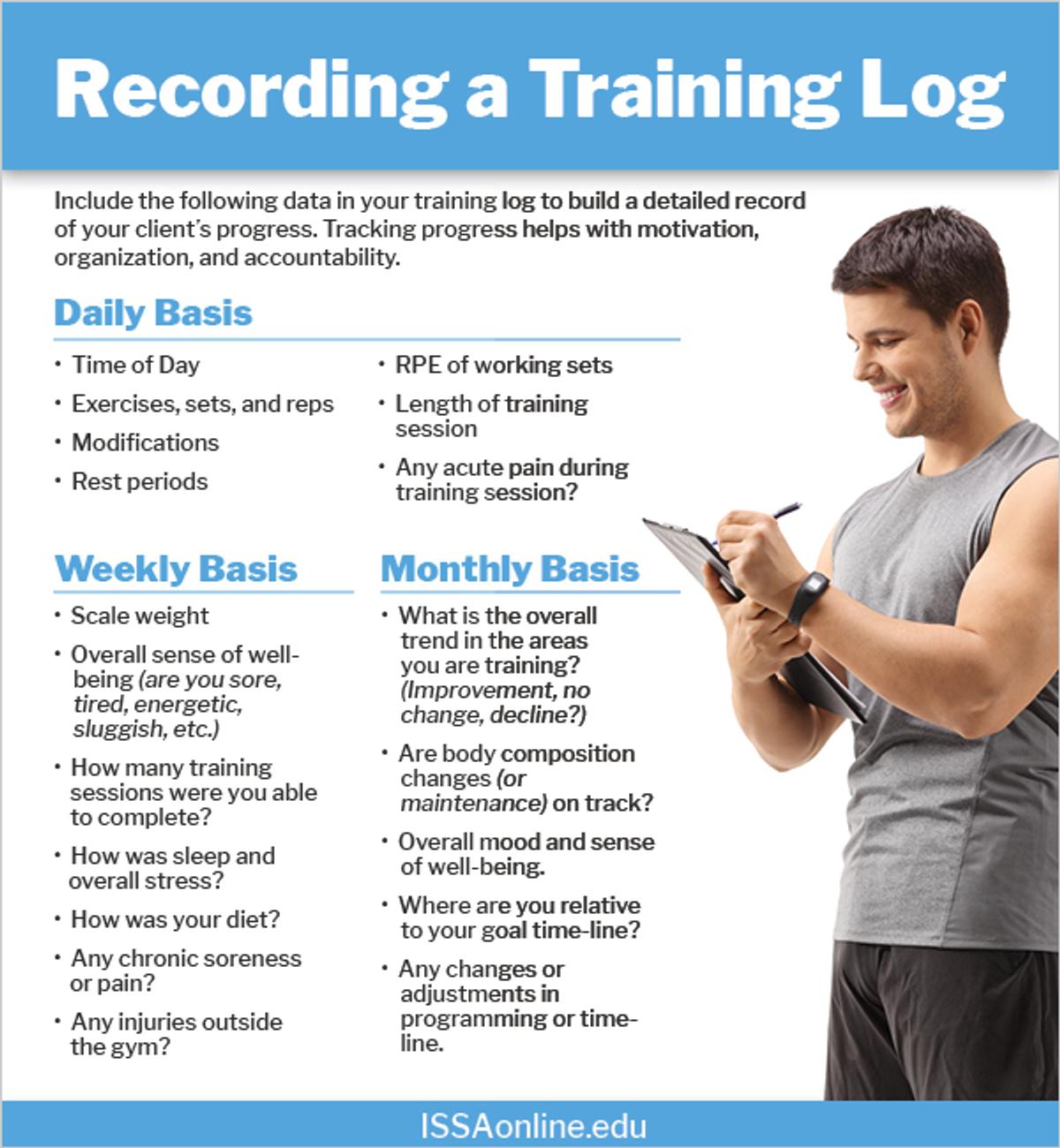
How to Train Like a Scientist: Keeping a Training Log
Reading Time: 4 minutes 44 seconds
BY: ISSA
DATE: 2019-04-04
Before becoming a mom, and a trainer, and a coach, I spent about 10 years working as a research scientist in a variety of labs. I have found that using my experience as a scientist in my practice as a trainer and coach has allowed me to train my clients more efficiently, safely, and in a way that is optimized for the individual.
The great thing about working in a lab as a research scientist is that regardless of our differences, we all spoke the same language, i.e., the scientific method. It's a way for a scientist—or trainer—to follow a process that delivers objective results based on data, rather than judgments based on opinion or bias.
The Scientific Method
In a nutshell, the scientific method looks like this:
Make an observation.
Ask a question based on those observations.
Form a hypothesis.
Make a prediction based on the hypothesis.
Test the prediction.
Use the results to make new hypotheses or predictions.
This very simplistic approach to scientific discovery can broadly describe the development of most theories; however, the way we use the scientific method in the gym is much more detailed and nuanced. When applying this method to clients, the very first and most important step we take is observation.
Making observations is integral to our initial client assessment and subsequent training sessions. The ISSA describes this as "guided discovery" as we see how our clients respond to different exercises, intensities, skill development, and programming choices. This stage also includes information gathering; a good trainer will ask questions to understand their client's past health history, their past training/athletic history, any injuries they've sustained, as well as where they have been most successful.
The ability to observe the effects of the individual training sessions as well as the long-term plan and to make adjustments as needed keeps individuals motivated and successful for the long term. To this end, it is very important that you use the most important tool in a scientist's toolkit, the lab notebook. For us trainers, it is our training log.
The Training Log
In the lab, a lab notebook is a gold mine that can tell you the history of the scientific process that has been taking place there for months and even years. And if you know your history, you will have a much better idea about what your future holds. A working scientist records everything in the lab notebook in great detail. What are you testing and why? What materials are you using? What time did you start the experiment? How did you measure the results? As a trainer, you should follow the same protocol with your training log.
What to Include in Your Training Log
The generally accepted rule about lab notebooks, or training logs, is that they should be detailed enough that if you weren't there, someone should be able to replicate your work simply by reading what you wrote down. Another benefit of a training log is that you can review what you have done in the past to assess what successes you have had and whether you need to change directions or keep forging ahead. Time often distorts memory, so being able to see your thoughts written down at the actual time you were having them is much more informative than trying to remember your methods and motivation.
Remember to Include Data Outside the Gym Setting
There are a lot of online apps available for tracking sets, reps, and weights for training sessions, but these are no substitute for a detailed training log because the most important data is more personal. Are we dealing with any injuries? Are we working on form improvements? Does the client get out of breath or easily fatigued during the training session? How is diet? Sleep? Stress?
These more nuanced questions can give you a lot of information on how to adjust a program for the long term. An individual who is experiencing joint pain on heavier weights may need to do a period of volume work to strengthen connective tissue and condition the muscles to maintain good form for longer work periods. A runner whose running speeds are not improving may need to increase calories on the days before longer runs. An individual who is following a calorie restricted diet, but having trouble losing weight may need to work on getting at least eight hours of sleep a night.
Each Client is an Individual Project
Nothing in the lab or the gym is random. A large part of what we do when trying to answer a question is figuring out the best way to measure or observe the answer. It starts with designing our experiment based on the current research and what we already know—we make an assessment. And then we spend days, weeks, sometimes even months, optimizing the reactions or processes that we are using to obtain our data. If every time our experiment didn't work we just scrapped it and started with something completely new, we'd never get anywhere.
With clients, although there must be some degree of discovery and optimization taking place, we must be moving in a generally positive direction regarding their fitness and goals. Keep track of what works and doesn't work, what causes pain or discomfort, and what they like doing to keep them moving forward. By tracking the changes we make over time, we discover the optimal conditions for each individual client. In personal training, you will run into some roadblocks from time to time, but accurate record keeping will help you navigate them.
Identify Visible Signs of Progress
One of the most valuable aspects of a good training log is the ability to review your client's training history and identify the improvements they have made over time. Whether it's a change in the measuring tape, the scale, the number of pullups they can do, the miles they can run, or the weight on the bar, showing clients their improvements over time is one of the most powerful motivators for long term adherence
There are a lot of factors that determine the success of our clients over the short and long term. It is easy to blame non-compliance for the bulk of their shortcomings, but there are often hidden factors that are making it difficult for them to achieve their goals. Simply observing the whole picture, not just the narrow focus of individual exercises, can reveal a lot more data that we can use to help them succeed in the long run. More importantly, it will contribute greatly to your success as a trainer.
Interested in the science of fitness but not sure where to start? Check out the ISSA's Personal Trainer certification to boost your knowledge and make the most of your training.

Click HERE to download this handout and share with your clients!